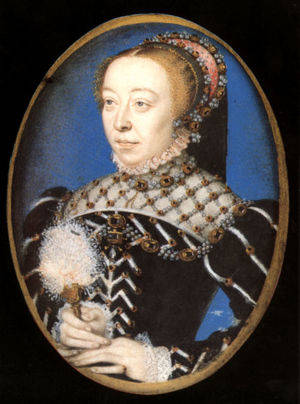Caterina de’ Medici and Italian Craftsmanship. A Visual Representation
America’s oldest federal cultural institution - The Library of Congress - received a work of art in book form, Caterina de’ Medici, regina e mecenate. This rare and precious piece celebrates the feminine genius of Catherine de’ Medici, once Queen of France, who lived and reigned during the 16th century.
On February 23, Fabio Lazzari, Vice-President of the Fondazione Marilena Ferrari-FMR, donated the book to the L.O.C. represented by its reference librarian James H. Billington during a ceremony held at the Italian Cultural Institute in Washington D.C at the precence of the Italian Ambassador to the US Giulio Terzi di S.Agata. The book represents the codification of female art and Italian craftsmanship, as women in fact created the work, thus honoring a sophisticated Medici woman who greatly supported and influenced the artistic sphere of her time.
The piece was entirely produced by master female wood-workers in Mantignana with the intention of representing Renaissance illumination and design techniques. Parchment, wood and good were utilized with the utmost care to compose this work, which includes six full-page plates that illustrate events in the life of Caterina de’ Medici. The book is hand finished in every detail and covered in naturally barrel-dyed calfskin with gold leaf embossing, showing Caterina’s emblems and monograms, produced by Marta Minelli, using the hot-pressing technique at the Antica legatoria Steri in Corciano.
Stefania Scotti of Milan designed the lead and color graphite drawings, while Marta Minelli controlled the hand sewn binding of the text. In her workshop, “La pergamena antica” in Sona, Emanuela Viviani used a special process to transform lambskin into the beautiful parchment of the text. These are just a few examples of the skills of the Italian women who produced this fine text. Caterina would have surely been proud to see the work of her fellow Italian women.
As most know, the Medici family left indelible imprints on Italy politically, socially, and artistically. There are endless names of dukes and their heirs who exerted influence on Florence and ensured that the family’s prestige live on. One of the most-powerful female Medici is Catherina (1519-1589), daughter of Lorenzo, Duke of Urbino. Through political turmoil, young Caterina was taken hostage as a child and placed in various convents, where she in turn received an excellent education. Caterina’s life circumstances—receiving an education, and then living in France as a royal figure—facilitated her legacy and patronage of the arts.
Upon marrying Henry of Orleans, the son of King Francis I, Caterina caused quite a stir in France when she appeared at the Royal Court in high heels. She was scoffed at by the French, who contemptuously regarded her as “the Italian woman”. However, Caterina was a devout mother and woman of the Renaissance; she acted in favor of Catholicism to further advantage her crown, though was very superstitious and kept astrologers around her constantly. She served France as a powerful queen when her husband died suddenly in 1559, though her presence in France remained unwelcomed, despite her political endeavors and negotiations.
Caterina de’ Medici’s passion for art, theatre, books and cuisine flourished within her palace. She truly was a Macchiavellian queen, and manipulated her political realm to ensure that her sons would become powerful rulers, though she often met opposition from the French. She was an adamant patron of the arts who supported artists of her time at her court.
Interestingly, Caterina’s love for food impacted French cuisine for centuries afterwards. Indeed she imported her Florentine chefs and table manners to France, brandishing her tables with elegance and sumptuous fare. She helped do away with the medieval heaviness of food fare and encouraged natural tastes, colors and textures which later become established as the norm in classical cooking.
Caterina’s passion for the arts and cuisine lives on in the 21st century. In fact, The Caterina de’ Medici Gastronomic Society in Pennsylvania is dedicated to dispersing the knowledge of classical and regional Italian cooking, wines and cultural heritage, celebrating the Queen’s palette and contribution to the culinary arts.
On the other hand, the Fondazione Marilena Ferrari-FMR transported the priceless work of art in book form Caterina de’Medici, The Patron Queen to the Library of Congress, giving the American public the opportunity to learn more about this Medici through a precious artistic medium. Testaments to Caterina’s legacy and to the perseverance of female artistry in Italy today are infused in modern culture through food and art, and meant for the world to savor.





































i-Italy
Facebook
Google+
This work may not be reproduced, in whole or in part, without prior written permission.
Questo lavoro non può essere riprodotto, in tutto o in parte, senza permesso scritto.